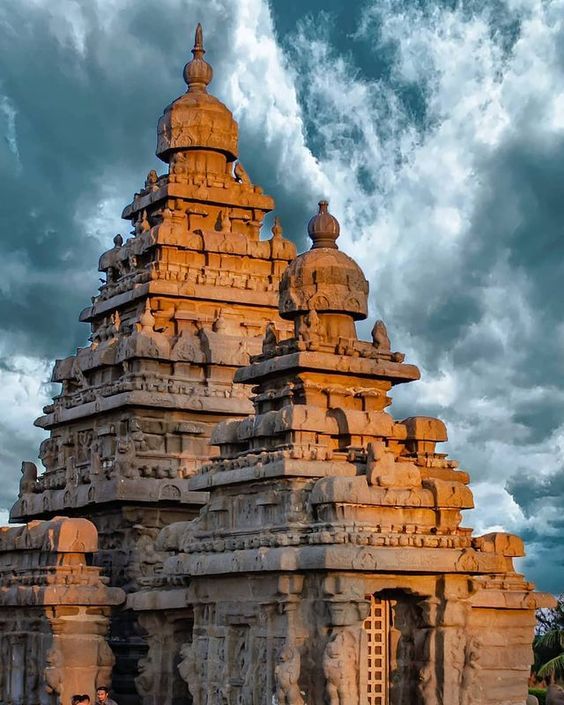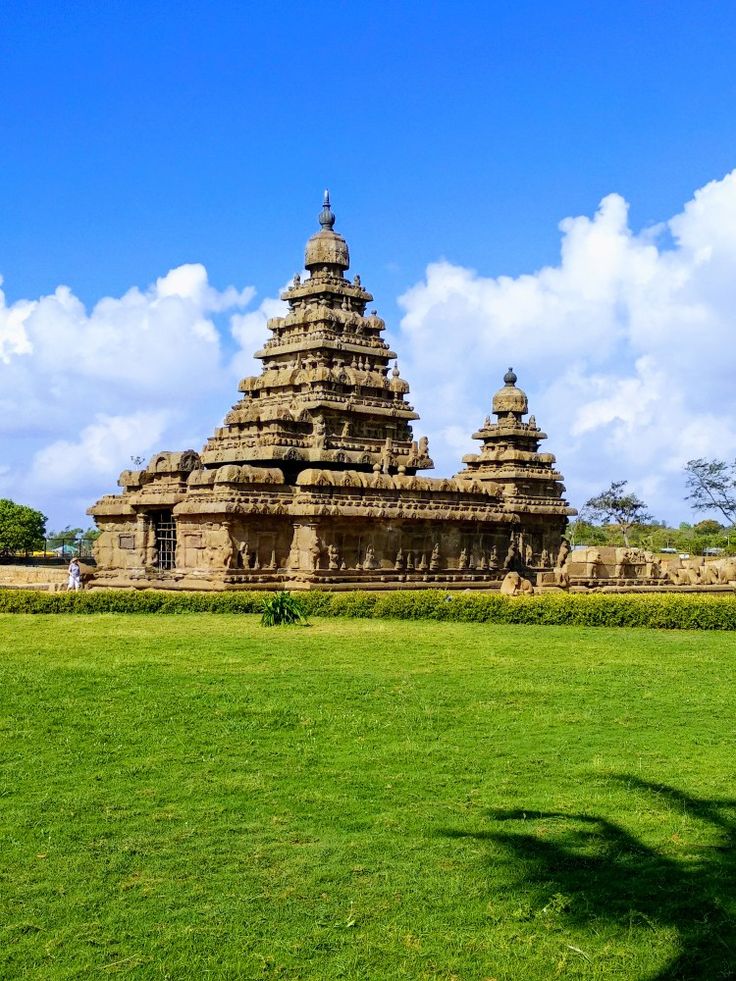
The Mahabalipuram Temple, also known as the Shore Temple, is a magnificent testament to ancient Indian architecture and craftsmanship. Nestled on the shores of the Bay of Bengal in Tamil Nadu, this temple complex has fascinated historians, architects, and travelers for centuries. In this blog, we will delve into the rich history, intricate architecture, and cultural significance of the Mahabalipuram Temple. We will also provide practical information for visitors, including how to reach the temple, its opening times, and the best times to visit.
Mahabalipuram Temple History
Mahabalipuram, also known as Mamallapuram, has a history that dates back to the 7th and 8th centuries during the reign of the Pallava dynasty. The city was an important port and a bustling center of trade and commerce. The Pallava kings, particularly Narasimhavarman I, also known as Mamalla, played a crucial role in the development of Mahabalipuram as a major cultural and religious hub.
The Shore Temple, the most iconic structure in Mahabalipuram, was built by King Narasimhavarman II, also known as Rajasimha, in the early 8th century. The temple complex was constructed using granite and stands as a testament to the Pallava dynasty’s architectural prowess and devotion to Lord Shiva.
Mahabalipuram Temple Architecture
The architecture of the Mahabalipuram Temple is a brilliant example of Dravidian style, characterized by its intricate carvings, grand gopurams (towering gateways), and beautifully sculpted panels. The Shore Temple, in particular, is unique as it is one of the earliest structural temples built in stone, unlike the rock-cut temples that were prevalent during that period.
The Shore Temple complex consists of three shrines: one large and two smaller shrines. The main shrine is dedicated to Lord Shiva, while the smaller shrines are dedicated to Lord Vishnu and another form of Lord Shiva. The temple is famous for its exquisite bas-relief panels, which depict various scenes from Hindu mythology, including the story of the descent of the River Ganges.
UNESCO World Heritage Mahabalipuram

In 1984, Mahabalipuram was designated as a UNESCO World Heritage Site, recognizing its historical, cultural, and architectural significance. This designation has helped in preserving and promoting the temple complex as an important tourist destination. The site is now protected and maintained by the Archaeological Survey of India, ensuring that its legacy is preserved for future generations.
Where Mahabalipuram Temple is Located
Mahabalipuram Temple is located in the coastal town of Mahabalipuram, approximately 60 kilometers south of Chennai, the capital city of Tamil Nadu. The town is situated on the Coromandel Coast along the Bay of Bengal and is easily accessible from Chennai via road and rail.
Mahabalipuram Temple Built By
The Shore Temple in Mahabalipuram was built by the Pallava king Narasimhavarman II, also known as Rajasimha, in the early 8th century. The Pallavas were known for their patronage of art and architecture, and the Shore Temple stands as a testament to their legacy.
Mahabalipuram Temple Made By
The Mahabalipuram Temple was constructed using granite blocks sourced from nearby quarries. The Pallava artisans and sculptors meticulously carved these stones to create the intricate designs and sculptures that adorn the temple. The use of granite, a durable material, has helped the temple withstand the test of time and the harsh coastal environment.
Mahabalipuram Temple Opening Time
The Mahabalipuram Temple is open to visitors from 6:00 AM to 6:00 PM every day. The early morning and late afternoon are the best times to visit, as the weather is cooler and the lighting is ideal for photography.
Mahabalipuram Temple Visiting Time

The ideal visiting time for Mahabalipuram Temple is during the winter months, from November to February, when the weather is pleasant and conducive for exploring the site. The summer months can be quite hot and humid, making it less comfortable for sightseeing.
Mahabalipuram Temple Festival
The Mahabalipuram Dance Festival is one of the most significant cultural events held at the temple complex. This month-long festival takes place in January and February and features classical dance performances by renowned artists from all over India. The open-air stage, with the Shore Temple as the backdrop, provides a stunning setting for these performances, making it a must-visit event for culture enthusiasts.
How to Reach Mahabalipuram Temple
By Air: The nearest airport to Mahabalipuram is Chennai International Airport, which is well-connected to major cities in India and abroad. From the airport, you can hire a taxi or take a bus to Mahabalipuram.
By Train: The nearest railway station is Chengalpattu, located about 29 kilometers from Mahabalipuram. From Chengalpattu, you can hire a taxi or take a bus to reach Mahabalipuram.
By Road: Mahabalipuram is well-connected by road and can be easily reached from Chennai. Regular buses ply between Chennai and Mahabalipuram, and you can also hire a taxi or drive your own vehicle.
Mahabalipuram Temple Attractions
Apart from the Shore Temple, Mahabalipuram boasts several other architectural marvels that are worth exploring:
1. Arjuna’s Penance: This massive rock-cut relief is one of the largest in the world and depicts the story of Arjuna’s penance to obtain the powerful weapon, Pasupata, from Lord Shiva. The intricate carvings and the sheer scale of this masterpiece make it a must-visit attraction.
2. Pancha Rathas: These five monolithic structures, each carved out of a single rock, are named after the Pandavas from the Mahabharata. Each ratha (chariot) has a distinct architectural style and is adorned with beautiful carvings.
3. Krishna’s Butterball: This giant boulder, precariously perched on a slope, defies gravity and has been a source of fascination for visitors. Legend has it that Lord Krishna used to steal butter as a child and this boulder is a tribute to his playful nature.
4. Varaha Cave Temple: This rock-cut cave temple is dedicated to Lord Vishnu in his Varaha (boar) incarnation. The temple features intricate carvings depicting various mythological scenes.
5. Mahishasuramardini Cave: This cave temple is dedicated to the goddess Durga and features exquisite carvings depicting her victory over the buffalo demon Mahishasura.
Mahabalipuram temple photos




Conclusion
The Mahabalipuram Temple is not just a place of worship but a symbol of India’s rich cultural and architectural heritage. Its intricate carvings, grand structures, and historical significance make it a must-visit destination for anyone interested in history, architecture, and spirituality. Whether you are an avid traveler, a history buff, or a cultural enthusiast, Mahabalipuram promises an unforgettable experience that will leave you in awe of its timeless beauty. So, plan your visit to this UNESCO World Heritage Site and immerse yourself in the splendor of ancient India.


Leave a Reply